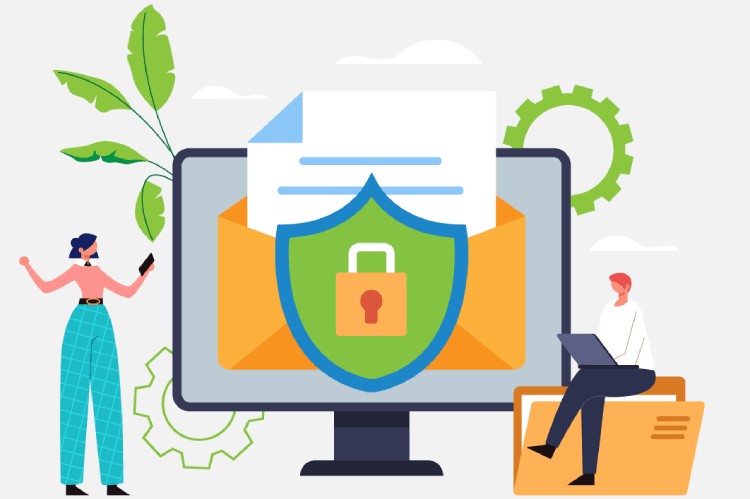The Ultimate Guide To Email Phishing Protection For Professionals
In today's digital age, email phishing scams have become increasingly common. As more and more people rely on email for communication, hackers and scammers have found ways to exploit this platform to lure unsuspecting individuals into revealing sensitive information. Email phishing attacks are not only a concern for individuals but also for businesses. A single phishing email can lead to a data breach or financial loss, making it essential for professionals to understand how to protect themselves and their organizations from these threats.

Examining The Warning Signs That Distinguish Phishing Emails From Authentic Emails:
1. Content Of The Email:
- The appearance of the logo seems slightly altered in terms of its design, positioning, hues, and other elements.
- There are errors in grammar or spelling in the text.
Either the greeting is not personalized or it is absent altogether.
2. Deceptive URL and Bogus Site:
As previously stated, nearly all phishing emails contain dubious links. One can detect whether a link is questionable or not by recognizing these warning signs:
- The email's context does not correspond with the URL.
- The domain section is either unclear or ambiguous, causing the user to perceive something.
- An unexpected message appears on the site indicating that the security certificate has expired.
3. Sender, Recipient, and Topic:
The recipient is not accustomed to communicating with or anticipating emails from the sender.
Although the email is supposedly from a trustworthy organization, the sender's email address contains a publicly available email domain such as gmail.com.
The email address of the authentic company includes unfamiliar characters such as digits or symbols like $, , &, etc.
Ways to Prevent Phishing Emails:
1. Robust Security Measures:
Effective prevention of email phishing commences with robust security measures, including:
- Antivirus, anti-malware, web filters, and firewalls that have been recently updated.
- Email gateways that are secure and equipped with anti-spam, anti-malware, and filtering based on policies.
- Web browsers of today come equipped with in-built safeguarding features that protect against phishing websites.
- Software that is frequently maintained and upgraded.
2. ATP (Advanced Threat Protection):
Modern-day phishing scams have become so advanced that traditional security solutions are unable to detect them. Nonetheless, ATP solutions have the capability to uncover these sophisticated scams, even if they are concealed by legitimate domains or services, or involve several layers of redirects.
ATP solutions equipped with Machine Learning are strong enough to detect phishing sites and scams instantly. Furthermore, they enhance their ability to offer better and dependable protection against various types of phishing attacks by learning from previous scams.
3. Implement Measures To Prevent Phishing Proactively:
By utilizing ahead-of-threat attack prevention tools, the likelihood of falling victim to phishing attacks can be decreased. This strategy entails the observation and examination of Domain Name Server (DNS) traffic and information in order to:
- Detects and prevents the registration of malicious phishing websites by identifying and blocking their associated domain names.
- Minimize damage across the network by detecting and isolating devices or endpoints that are infected.
In addition to identifying and stopping possible phishing attacks, AI-powered instruments can be useful. These instruments become familiar with the email communication patterns of users, automatically identify unusual or suspicious activities, examine incoming links in real-time, and offer actionable data to security teams for responding to attacks.

In conclusion, email phishing is a growing threat for professionals in all industries, but with the right knowledge and tools, it is possible to protect yourself and your organization. By implementing the email security best practices outlined in this guide, such as using multi-factor authentication, training employees to identify phishing attempts, and using email filtering software, you can significantly reduce the risk of falling victim to a phishing attack. Remember to always stay vigilant, and if you do receive a suspicious email, report it to your IT department immediately. With a proactive approach to email security, you can safeguard your sensitive information and keep your organization safe from cyber threats.